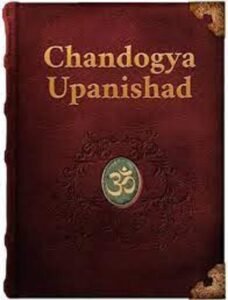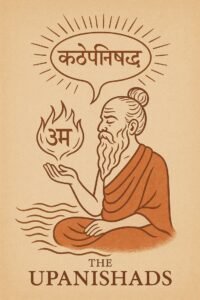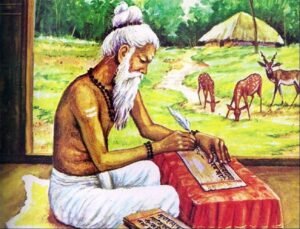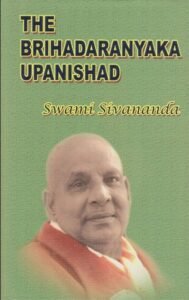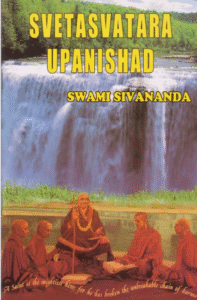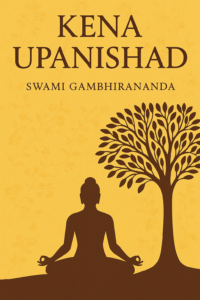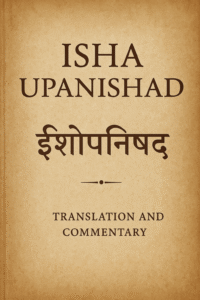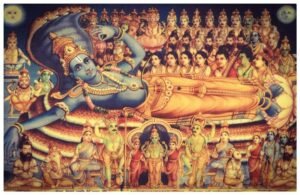Upanishads
Upanishads
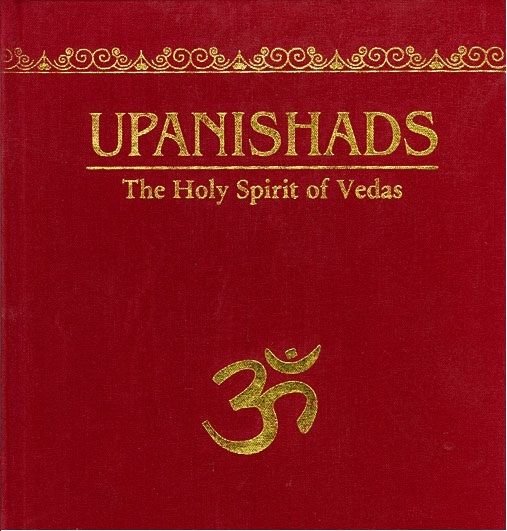
The Upanishads – The Wisdom of Vedanta
The Upanishads are among the most profound spiritual texts in the world, revered as the crown jewels of Indian philosophy. They form the concluding part of the Vedas and are often called Vedanta, meaning “the end of the Vedas.” Unlike the earlier Vedic texts, which emphasize rituals, hymns, and sacrifices, the Upanishads focus on inner realization, meditation, self-knowledge, and the discovery of ultimate truth. For thousands of years, they have guided seekers on the path to liberation (moksha) and shaped the philosophical foundation of Hinduism. Their influence, however, extends far beyond India, inspiring thinkers and philosophers across cultures and centuries.
Origin and Meaning
The word “Upanishad” comes from the Sanskrit roots upa (near), ni (down), and shad (to sit), which together mean “sitting down near.” This refers to the ancient tradition where disciples sat close to their guru to receive sacred knowledge. The Upanishads were not merely intellectual lessons but deep, experiential teachings passed through close teacher–student dialogues.
Composed between 800 BCE and 200 BCE, though some may be earlier, the Upanishads were transmitted orally for centuries before being written down. They represent a transition in Indian spirituality—from external ritual worship to inner meditation and philosophical inquiry
Central Teachings
The Upanishads explore fundamental questions of human existence: Who am I? What is the ultimate reality? What happens after death? What is the meaning of life? Their answers revolve around a few core ideas:
Brahman – the absolute, infinite, unchanging reality that is the source and sustainer of the universe. Brahman is beyond description yet is the essence of everything.
Atman – the individual self or soul, which is eternal and pure.
Unity of Atman and Brahman – The highest realization in the Upanishads is that Atman and Brahman are not separate; the true self within is one with the cosmic spirit. This is expressed in the Mahavakyas (great sayings):
Tat Tvam Asi (“Thou art That”)
Aham Brahmasmi (“I am Brahman”)
Prajnanam Brahma (“Consciousness is Brahman”)
Ayam Atma Brahma (“This Self is Brahman”)
Moksha – liberation or freedom from the cycle of birth and death (samsara) comes through self-realization and understanding this unity.
Paths of Knowledge – The Upanishads stress meditation, contemplation, self-inquiry, detachment from material desires, and devotion to truth as ways to attain wisdom.
Dialogues and Style
The Upanishads are written in the form of dialogues between gurus and disciples, often using metaphors, stories, and paradoxical expressions to reveal truth. For example:
In the Katha Upanishad, the young seeker Nachiketa questions Yama, the god of death, about what happens after life.
The Chandogya Upanishad narrates the teaching of sage Uddalaka to his son Shvetaketu about the unity of self and Brahman.
The Brihadaranyaka Upanishad contains profound discussions between sages like Yajnavalkya and King Janaka.
This dialogical style makes the Upanishads both poetic and philosophical, requiring deep contemplation.
Influence on Hindu Philosophy
The Upanishads are the foundation of Vedanta philosophy, one of the six major schools of Hindu thought. Over centuries, different interpretations of the Upanishads gave rise to three main schools of Vedanta:
Advaita Vedanta – taught by Adi Shankaracharya, emphasizes absolute non-dualism: Atman and Brahman are identical.
Vishishtadvaita Vedanta – taught by Ramanujacharya, explains qualified non-dualism: the soul is part of Brahman but retains individuality.
Dvaita Vedanta – taught by Madhvacharya, teaches dualism: Atman and Brahman are eternally distinct, and liberation comes through devotion to God.
These interpretations kept the Upanishads alive as living philosophy rather than just ancient texts.
Global Impact
The wisdom of the Upanishads has crossed borders and influenced world thought. The German philosopher Schopenhauer called them “the most rewarding and elevating reading possible in the world.” Thinkers like Ralph Waldo Emerson, Henry David Thoreau, and Aldous Huxley drew inspiration from them, weaving their ideas into literature and philosophy. The Upanishadic teaching of unity and oneness also resonates with modern spiritual movements and scientific explorations of consciousness.
Upanishads and Spiritual Practice
While deeply philosophical, the Upanishads are not limited to theory. They inspire spiritual practices that include:
Meditation (Dhyana): Focusing on the inner self to realize Brahman.
Self-Inquiry (Atma Vichara): Questioning “Who am I?” to go beyond ego and realize true self.
Detachment (Vairagya): Renouncing material desires to focus on eternal truth.
Ethical Living: Practicing truth, compassion, and self-control as preparation for higher knowledge.
Through these practices, the Upanishads encourage individuals to look inward and discover divinity within themselves.
Timeless Relevance
Even today, the Upanishads remain highly relevant. In a world filled with materialism and restlessness, their teachings remind us of the importance of inner peace, self-knowledge, and universal unity. They show that true happiness does not lie in possessions or achievements but in realizing our eternal nature. Their universal messages of truth, consciousness, and oneness transcend religion and culture, making them guides for humanity at large.
Conclusion
The Upanishads stand as eternal beacons of wisdom, illuminating the path to self-realization and spiritual freedom. They transform the seeker’s journey from outward rituals to inward contemplation, from external forms to inner essence. By teaching the oneness of the soul and the cosmos, they dissolve barriers of ignorance and reveal the eternal truth that we are not separate from the divine.
Their legacy is not confined to ancient India; it continues to inspire global seekers, philosophers, and spiritual traditions. The Upanishads are not only scriptures of Hinduism but also universal works of philosophy that belong to all of humanity. In their pages, we find timeless answers to the deepest questions of life: Who am I? What is reality? What is the ultimate purpose of existence?
To study the Upanishads is to embark on a journey of awakening—a journey into the depths of consciousness, into the heart of truth, and ultimately, into the realization that the self and the eternal Brahman are one.


















































